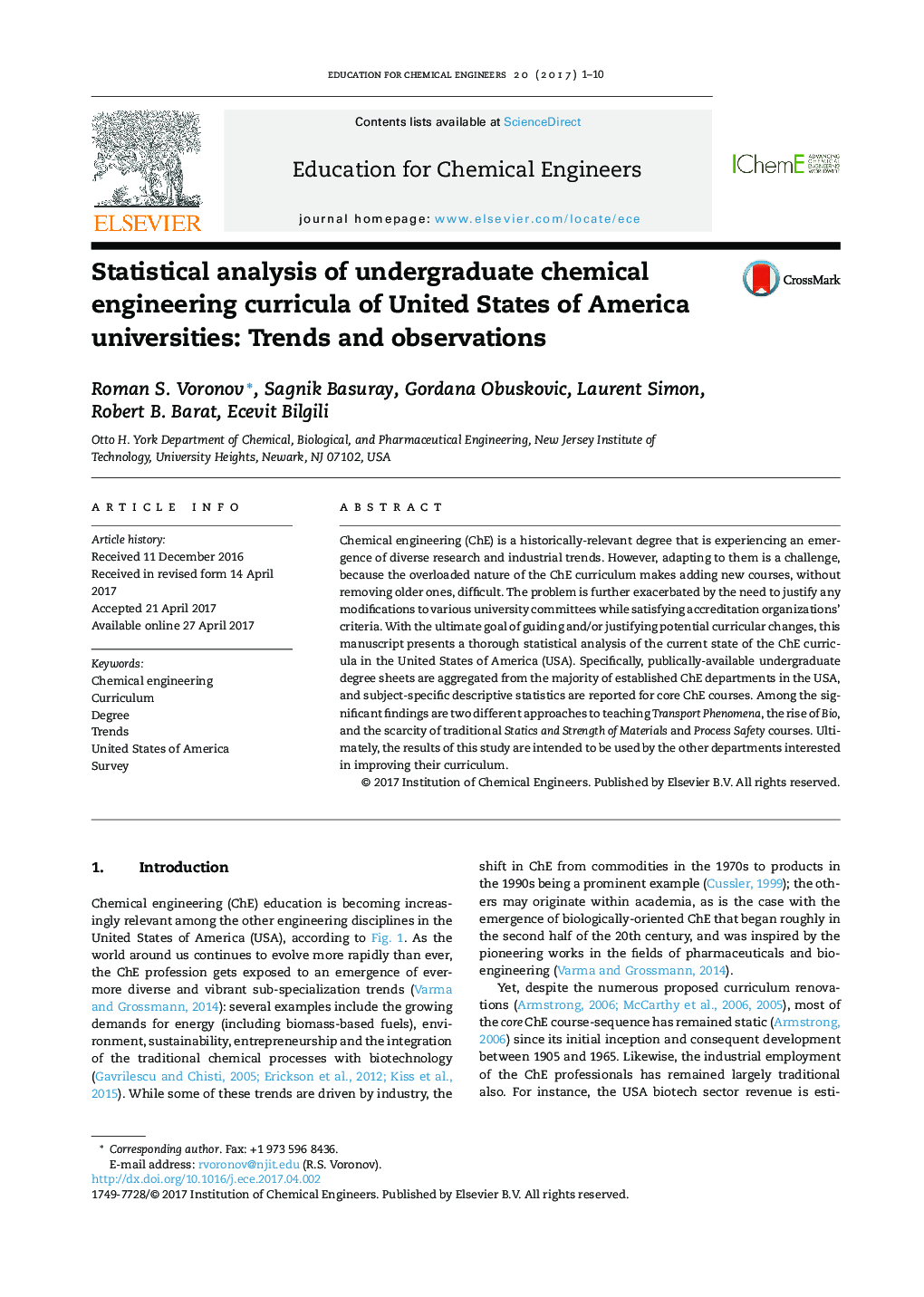| کد مقاله | کد نشریه | سال انتشار | مقاله انگلیسی | نسخه تمام متن |
|---|---|---|---|---|
| 4766400 | 1423952 | 2017 | 10 صفحه PDF | دانلود رایگان |
- Comprehensive statistical analysis of US ChE curricula is carried out.
- Two different approaches to teaching Transport topics are reported.
- Computational/Numerical Methods and Biology/Bio-Engineering are warranted.
- Safety is on the rise, while Statics and Strength of Materials is on decline.
- The results serve as a tool for guiding and/or justifying course changes.
Chemical engineering (ChE) is a historically-relevant degree that is experiencing an emergence of diverse research and industrial trends. However, adapting to them is a challenge, because the overloaded nature of the ChE curriculum makes adding new courses, without removing older ones, difficult. The problem is further exacerbated by the need to justify any modifications to various university committees while satisfying accreditation organizations' criteria. With the ultimate goal of guiding and/or justifying potential curricular changes, this manuscript presents a thorough statistical analysis of the current state of the ChE curricula in the United States of America (USA). Specifically, publically-available undergraduate degree sheets are aggregated from the majority of established ChE departments in the USA, and subject-specific descriptive statistics are reported for core ChE courses. Among the significant findings are two different approaches to teaching Transport Phenomena, the rise of Bio, and the scarcity of traditional Statics and Strength of Materials and Process Safety courses. Ultimately, the results of this study are intended to be used by the other departments interested in improving their curriculum.
214
Journal: Education for Chemical Engineers - Volume 20, July 2017, Pages 1-10
